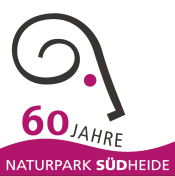
Our Südheide nature park
The peacefulness and seclusion of the landscape of the nature park has many advantages, particularly for rare, easily disturbed animal species adapted to extreme locations. The near-natural Lutter stream in the southern part of the nature park is for example home to more than 160 endangered plants and animal species, including the freshwater pearl mussel threatened by extinction.
The otter and the black stork find refuge close to the stream. Sand lizards, adders and smooth snakes weave their way through the heathland, above which the woodlark sings. Ospreys, kingfishers and white-tailed eagles make use of the airspace above the big fishponds. Boreal owls and pygmy owls on the other hand roam through the huge forests. Beautiful demoiselles, goldenrings and green hawkers whir above the clear streams during the daytime. Cranes and small red damselflies gather in the moors.
The scenery of the Südheide nature park is today predominantly characterized by large contiguous forests forming part of one of the largest forest areas in Lower Saxony. They consist mainly of pines and spruces which came into being due to the heathland afforestation which took place in the 1800s. Here can be found for example blueberries, cranberries, service berries and an abundance of mushrooms. The dry sandy heathland is characterized by heather, juniper and several types of grass. In the wetlands, in particular the bell heather and moor grass, bright yellow in the autumn, attract the visitor’s attention. Besides this, the quietness and low housing density encourage a large population of red deer, roe deer and wild boar.












